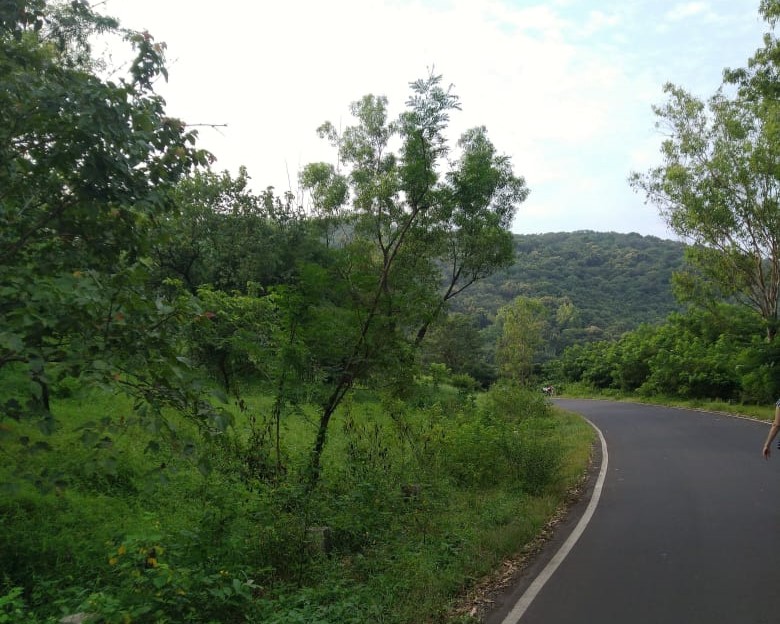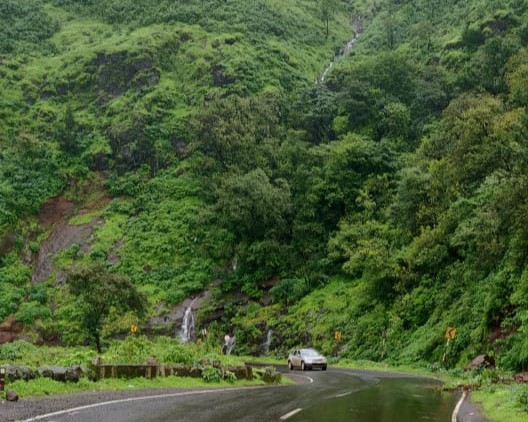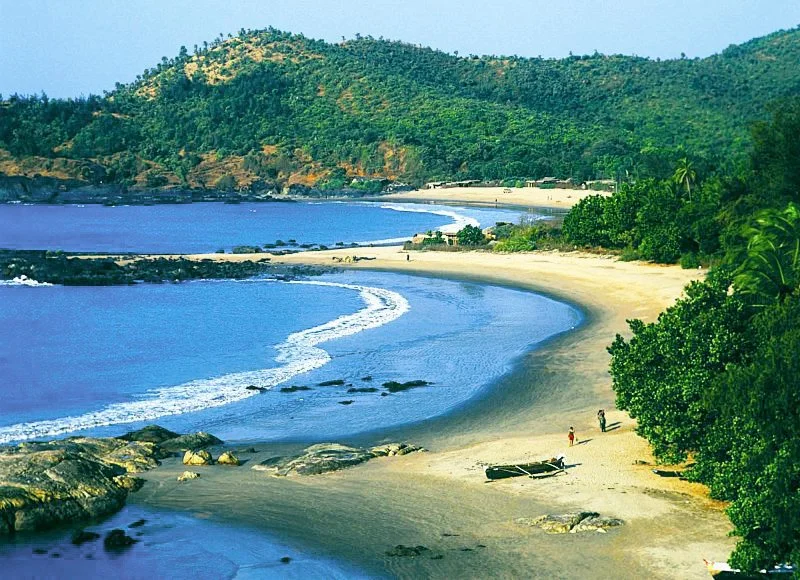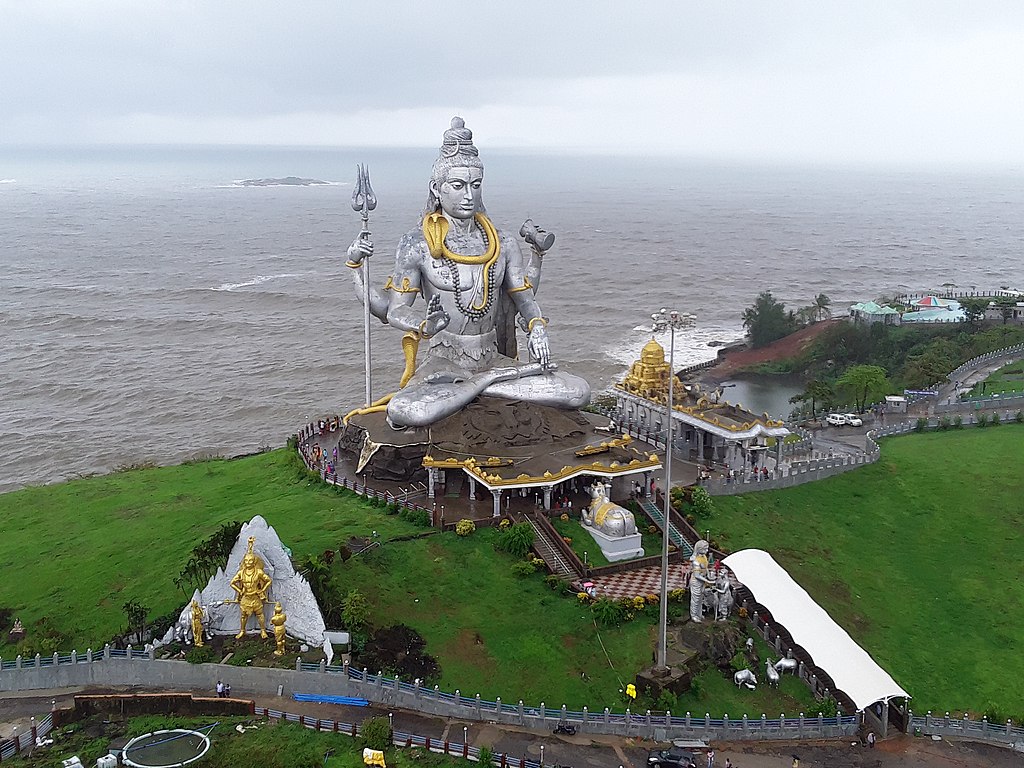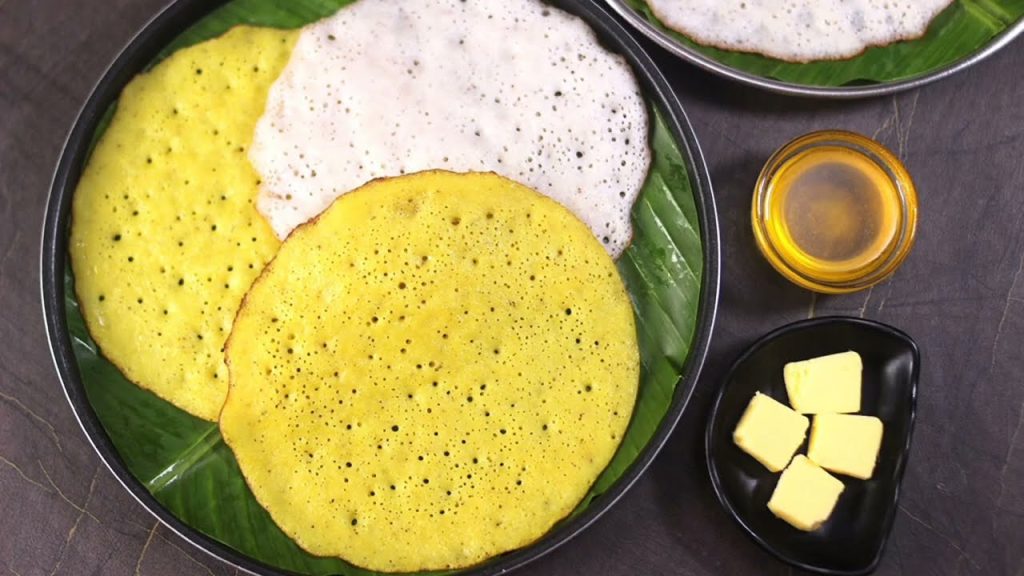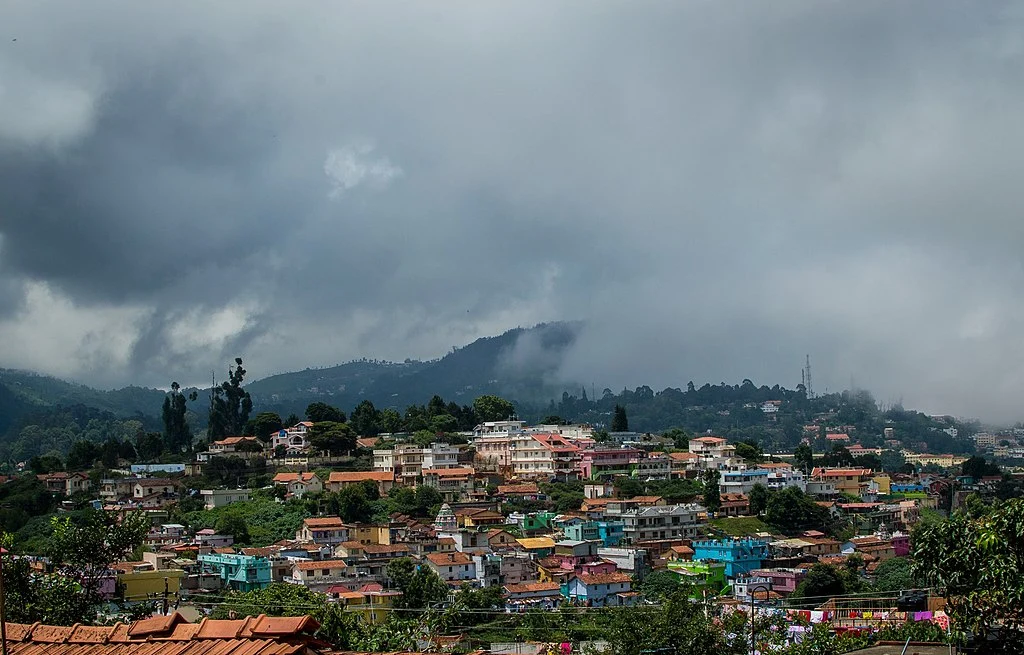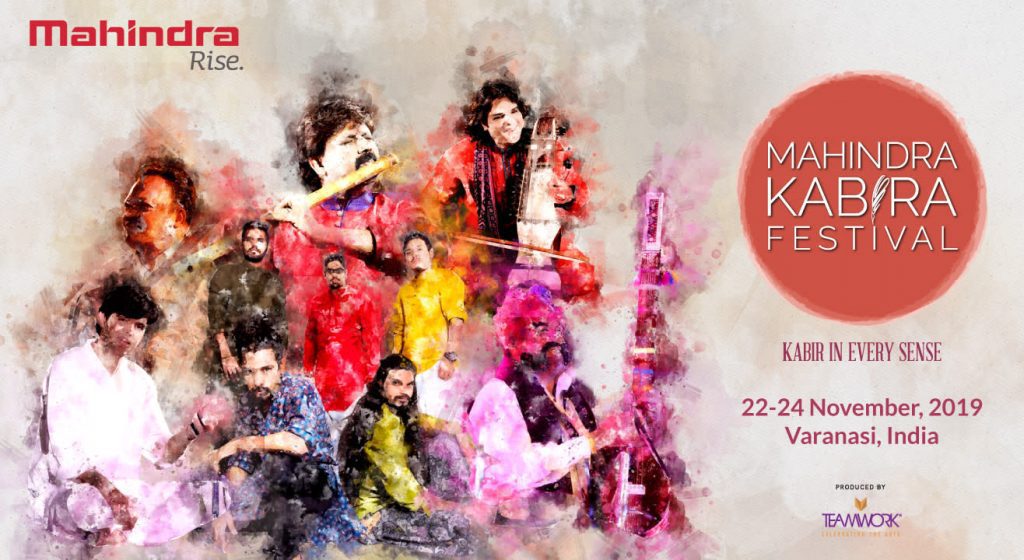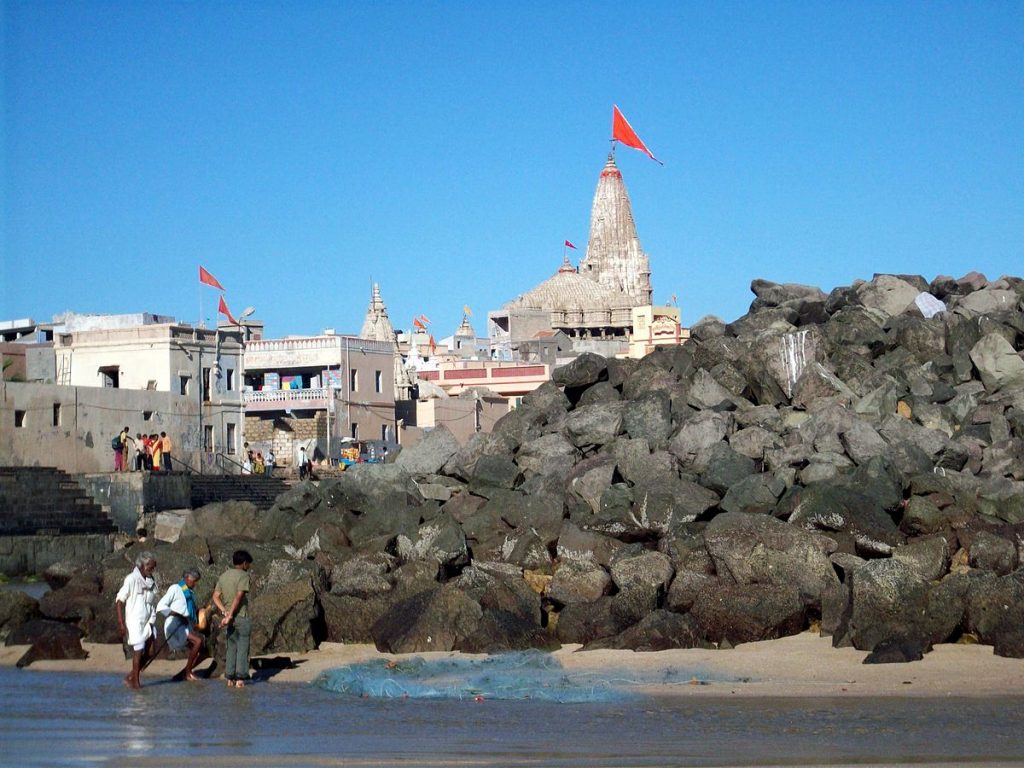One morning, Smiral Shah, a Pune resident and a loyal Savaari car rental user, felt the urge to embark on a monsoon road trip. Being a “passenger princess,” Smiral adored road trips, relishing the changing landscapes, and stopping for chai and misal pav along the way. For her, the magic of road trips was second only to her love for the monsoon, so she decided to combine the two and explore the Western Ghats of India.
India in monsoon is a dream, so she spent two days crafting the perfect itinerary, noting all the places she wanted to visit. Smiral planned to visit seven locations over seven days and was eager to discover which of these destinations would earn the title of the best monsoon spot. She booked a local Savaari car rental in Pune, marking the start of what she described as the “dreamiest” monsoon road trip she had ever experienced.
However, the real surprise was the unplanned destinations she encountered along the way—places not on her meticulously planned itinerary. Smiral was so thrilled with her adventure that she decided to share her journey, explaining why this monsoon trip in India was perfect and why it turned out to be the best decision ever.
Through the rain and hills – Western Ghats road trip itinerary
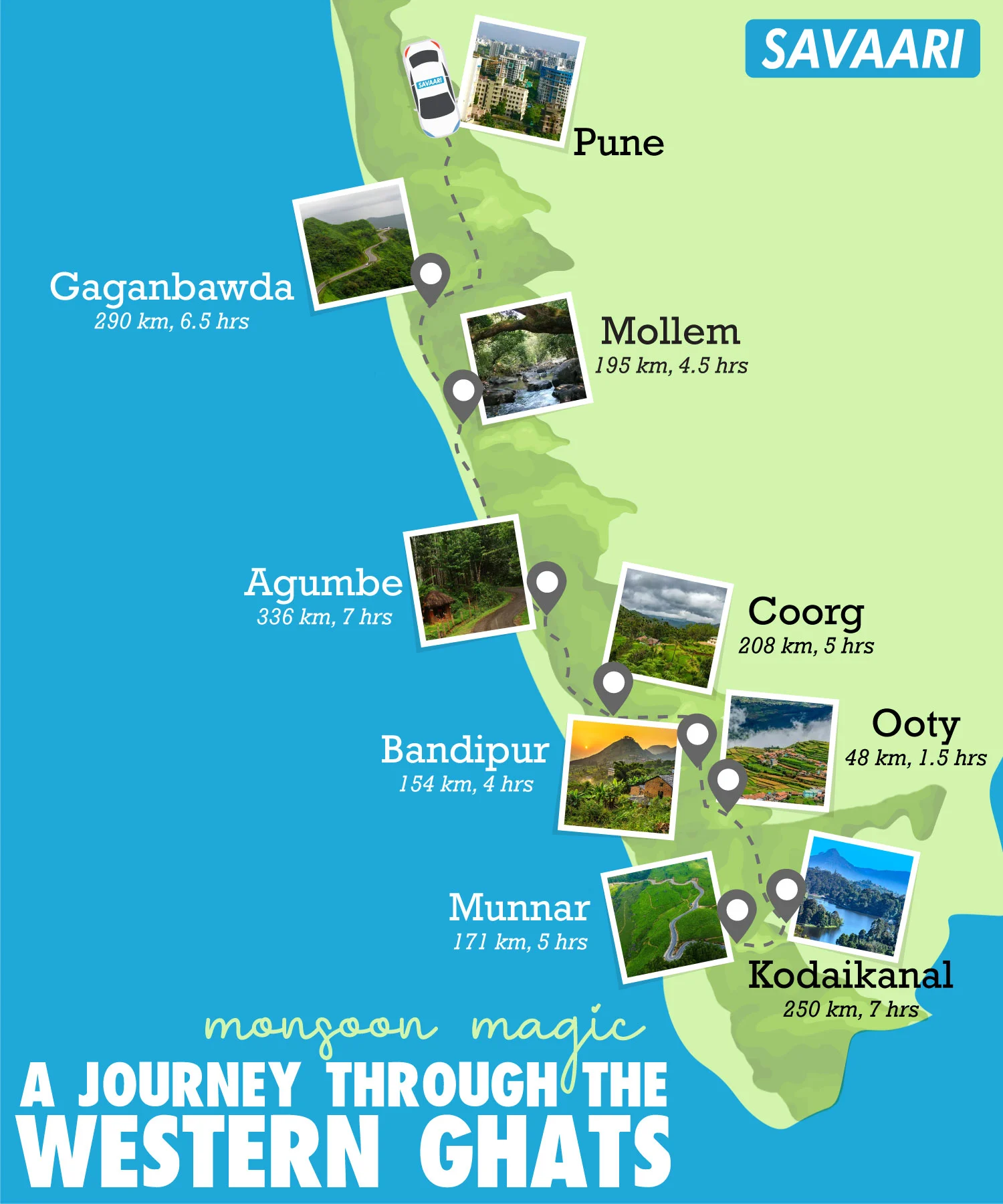
What makes a dream road trip? We often have dreams, and we often go on road trips, but how often do the two truly merge? I’ve found myself pondering this, as many of the destinations I’ve reached felt like dreams, but the journey itself never quite matched that feeling. I used to worry about GPS glitches and taking the wrong route, but all of that changed when I embarked on a monsoon trip in India in a Savaari cab through the Western Ghats.
I carefully crafted an exciting monsoon itinerary to explore the Western Ghats, covering four states in four days, ensuring I didn’t miss any must-see spots. However, I had my qualms about being a solo female traveler, and safety was a significant concern. My journey became even more extraordinary thanks to the fantastic driver, Pratik Bhaiya, whose professionalism and reassuring presence made me feel completely safe.
Before getting into my cab, I received a message detailing the attractions I would pass along the route. This surprised me since I already had an itinerary, but the offbeat locations were so intriguing that I had to integrate them into my plans. So, buckle up and join me as I guide you through the winding roads, stunning vistas, and cultural treasures that made this adventure through the Western Ghats truly unforgettable.
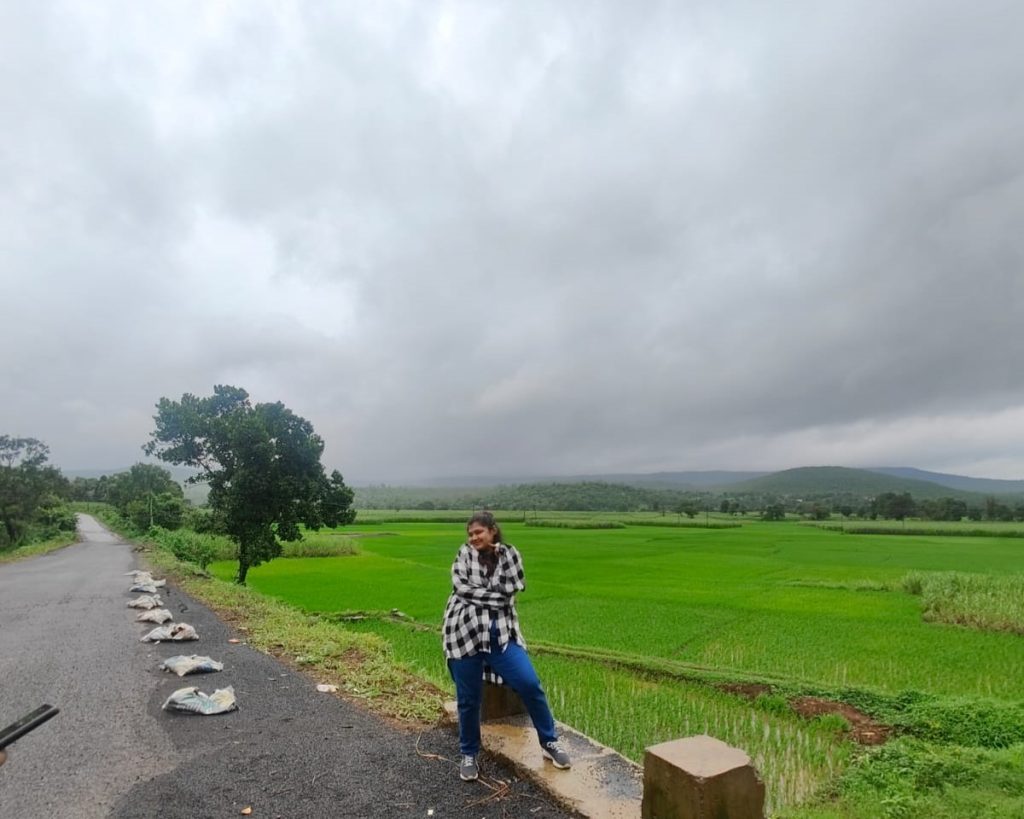
Pune to Gaganbawda (via Mahabaleshwar, Koyna Wildlife Sanctuary and Anuskura Ghat)
Total Distance: 421 km
Total Driving Time: 10 hr 11 min
Suggestion: Overnight stay in Gaganbawda
Pune was where my adventure began. I got a good night’s rest and woke up at 6 the next morning to find my chauffeur waiting for me. With a full tank of gas, an open mind, an insatiable appetite for adventure, and my driver, Pratik Bhaiya, by my side, I set off on this thrilling journey. As we left the bustling streets behind, the landscape unfolded into a picturesque panorama of lush fields and quaint villages.
Hillsides that lay bare in summer became a cascade of roaring waterfalls, cloaked in a million shades of green. Although I was sleepy, every moment was so enchanting that sleep felt like a missed opportunity. The views outside, with waterfalls cascading down, were more magical than any dream as we approached Mahabaleshwar.
Mahabaleshwar
As we reached Mahabaleshwar, located 122 km from Pune, the air grew cooler, infused with the fresh scent of rain-soaked earth. Nestled in the Sahyadri mountain range, Mahabaleshwar offered a perfect blend of lush green valleys, strawberry farms, and stunning viewpoints. With a handy Mahabaleshwar travel guide, I began with a visit to the strawberry fields, where the sweet aroma of fresh berries filled the air as I picked and tasted the delicious fruits.
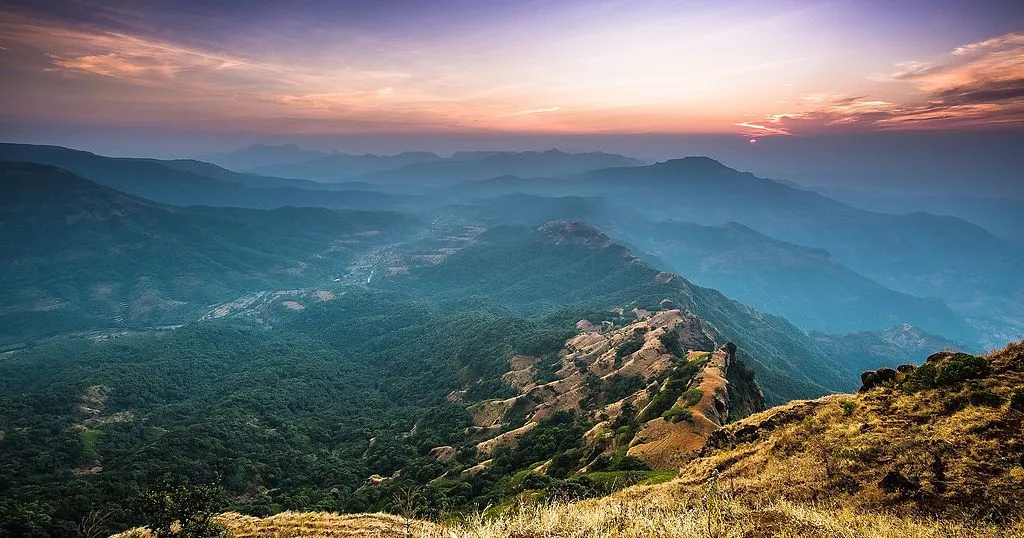
Next, Pratik Bhaiya took me to Arthur’s Seat and Kate’s Point, offering breathtaking views of the misty valleys and the Krishna River. A peaceful boat ride on Venna Lake provided a serene escape, reflecting the surrounding greenery.
The historical Pratapgad Fort offered not only a glimpse into the past but also incredible panoramic views of the landscape. I relished local delicacies like misal pav and corn pakoras, which perfectly complemented the chilly monsoon weather. Exploring nature trails led me to hidden waterfalls, offering moments of solitude and reflection. Mahabaleshwar, with its vibrant scenery and rich experiences, felt like a page from a storybook, leaving me with unforgettable memories.
Koyna Wildlife Sanctuary
Koyna Wildlife Sanctuary was a delightful discovery on my journey, just an hour away from Mahabaleshwar, thanks to Pratik Bhaiya’s suggestion. Located in Koynanagar, a discreet hill station in the Patan Taluka of Satara district, this sanctuary is nestled within the breathtaking Sahyadri mountain ranges of the Western Ghats. As part of the UNESCO World Network of Biosphere Reserves in India, Koyna’s evergreen forests mark the transition zone between the Deccan Plateau and the Konkan region.
The sanctuary is a haven for diverse wildlife, including tigers, leopards, and various bird species, thriving amidst the dense foliage and tranquil environment. Exploring the lush greenery and listening to the symphony of nature was a truly enchanting experience, highlighting the sanctuary’s significance in preserving biodiversity. The serene beauty and rich wildlife of Koyna made it a memorable stop on my monsoon trip in India, offering a unique glimpse into the unspoiled natural landscapes of Maharashtra.
Anuskura Ghat
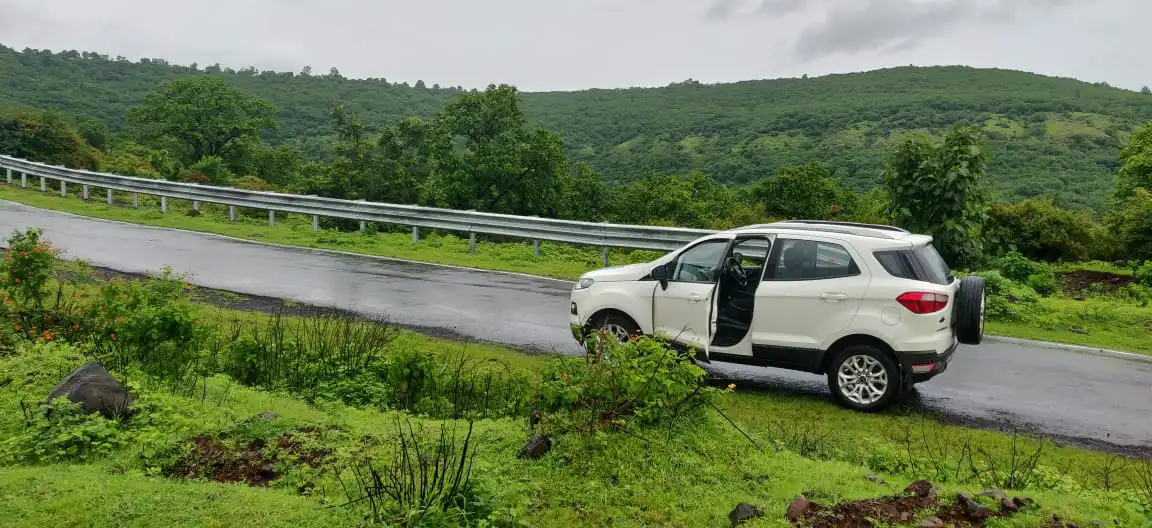
As we cruised through the winding roads, we stumbled upon a stunning ghat that made it feel like we were driving through the clouds. With a carefully curated monsoon playlist playing in the car, we soaked in the magic of this beautiful location. Nestled between Amba Ghat and Gaganbawda Ghat, Anuskura Ghat connects Konkan and Kolhapur district’s Ghatmatha.
During the British era, goods exported from the Rajapur market to the ghat head were transported through this very ghat.
The scenery was so stunning that I couldn’t resist stopping to soak in the beauty of this monsoon trip in India. Each bend in the road revealed new vistas, with valleys blanketed in rich greenery and clouds rolling over the peaks. Anuskura Ghat, with its enchanting views and tranquil atmosphere, was a perfect spot to pause and appreciate the natural splendor of the Western Ghats during this monsoon trip in India.
Arriving in Gaganbawda
Finally, we reached Gaganbawda in the evening. After a hearty dinner of paneer kothimbir vadi, I headed to my accommodation at Rainforest Farm & Resort to get some rest. The next morning, I woke up early to explore Gaganbawda and discovered several fascinating places.
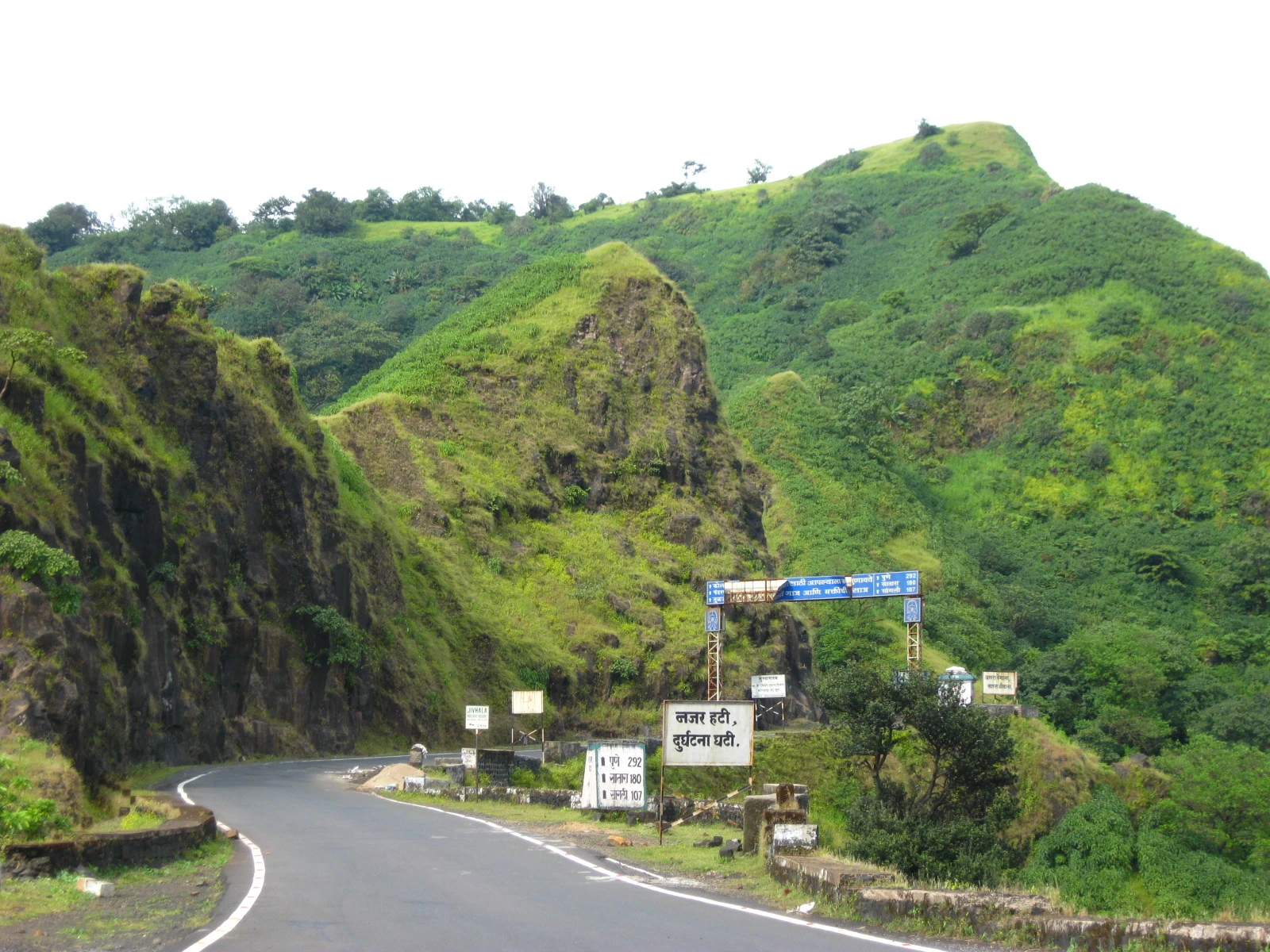
First on the list was Gagangad Fort, a site rich with history. During British rule, it served as the headquarters of the Gaganbawada tehsil, covering what is now known as Sindhudurg District. Within the fort, I found a small mosque and a Bhavani temple, and remnants of the fort’s guarding walls could still be seen. Shri Gagangiri Maharaj once settled in a cave near the fort called Garbhagiri, where he perfected his tantric techniques. Now, a temple of Gurudatta and an ashram dedicated to Shri Gagangiri Maharaj attract numerous devotees, especially during Datta Jayanti, one of Gaganbawda town’s main festivals.
Next, I visited Pant Amatya Wada, the erstwhile colonial residence of the Pant Amatya Bavdekar family. This wada houses a mini heritage museum featuring antiques from the Pant Amatya family. The site has also served as a filming location for many movies, with “Pachhadlela” being the most famous. Open to visitors from 10:30 a.m. to 5:30 p.m., Kaajva offers free entry to this historic residence.
Lastly, I explored the Palsambe (Ramling) Caves, known for their unique cave temples. These monolithic structures, also called Pandavleni, are believed to have been built by the Pandavas during their exile. The caves feature a Ganesha statue at the entrance and 12 shivlingas, with a slow stream of water trickling down to fall on the shivlingas. Located just 5 km from Kaajva, this spot was a must-visit. The historical insights I gained were incredibly valuable, and with a heart full of rich experiences, I then headed towards Goa.
Gaganbawda to Mollem (via Radhanagri, Gargoti, Amboli)
Total Distance: 230 km
Total Driving Time: 6 hr 30 min
Suggestion: Overnight stay in Mollem
After exploring Gaganbawda, I set out on a scenic journey to Mollem, choosing a route that took me through the charming towns of Maharashtra, suggested by Pratik Bhaiya. Whenever I mentioned to my friends that I was on my way to Goa, they immediately assumed I’d be partying. But that wasn’t my plan at all. I wanted to explore a different side of this famous hippie destination, so I headed to Mollem, a small town that not only promised natural beauty of India in monsoon, but several gorgeous pitstops.
Radhanagri
My first stop was Radhanagri, a quaint town known for the Radhanagari Wildlife Sanctuary, a haven for wildlife enthusiasts. The sanctuary, nestled in the Western Ghats, is home to diverse flora and fauna. As I wandered through the lush forests, I marveled at the beauty of the region and spotted several bird species, making it a birdwatcher’s paradise.
Gargoti
Next, I visited Gargoti, a small town renowned for its mineral museum, the Gargoti Museum. The museum houses an impressive collection of mineral specimens and zeolites, showcasing the geological diversity of the region. It was fascinating to learn about the different minerals and their formations, and the unique exhibits made it a memorable stop on my journey.
Amboli
I then made my way to Amboli, a picturesque hill station nestled in the Sahyadri Hills. Known for its breathtaking waterfalls and misty landscapes, Amboli was truly dreamy. I stopped at the famous Amboli Waterfalls, where the cascading waters amidst lush greenery created a magical atmosphere. The cool breeze and serene surroundings made it an ideal spot to relax and enjoy the beauty of nature.
Arriving in Mollem
After experiencing these locations, I finally reached Mollem, ready to explore its hidden gems. This small town, surrounded by dense forests and vibrant wildlife, promised a peaceful retreat from the bustling tourist spots of Goa. Mollem was the perfect destination to discover the tranquil side of Goa, offering a unique blend of natural beauty and adventure. The village is the primary entry point for Bhagwan Mahaveer Sanctuary and Mollem National Park.
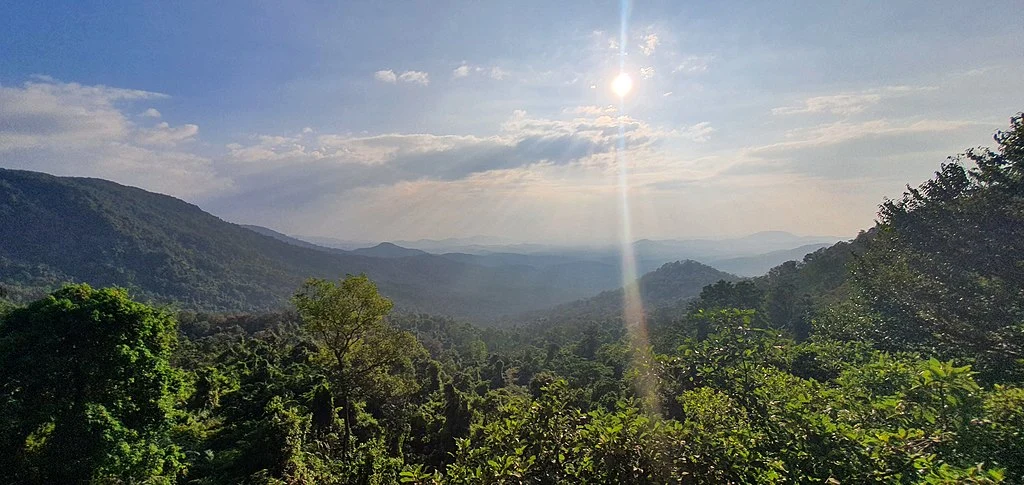
Together, these reserves host about 722 species of wild plants and a diverse array of animals and birds. Known as Goa’s largest wildlife reserve, they boast several attractions, including the renowned Dudhsagar Falls, Mollem National Park, Tambdi Surla Temple, and Devil’s Canyon. The biggest draw of the Mahavir National Park is Dudhsagar Falls, whose waters are considered sacred by locals. I took a jeep safari through the park to witness this cascading marvel.
Places to Visit in Mollem
- Dudhsagar Falls: This majestic waterfall is a must-see, especially during the monsoon when it is in full flow. The locals consider its waters sacred, and a jeep safari through the Mahavir National Park offers a thrilling way to experience its beauty.
- Mollem National Park: A haven for nature lovers, the park is home to diverse flora and fauna. Trekking through its lush forests offers glimpses of exotic wildlife and the tranquil beauty of Goa’s natural landscape.
- Tambdi Surla Temple: The oldest temple in Goa, Tambdi Surla is an architectural gem hidden within the forest. This 12th-century Shiva temple is an example of Kadamba architecture and offers a serene spot for reflection.
- Devil’s Canyon: A natural gorge that provides stunning views and a serene environment, perfect for those seeking solitude amidst nature.
I didn’t do much else in Goa but did indulge in a delicious monsoon dish called Almi Xacuti for dinner in my hotel, as recommended by my chauffeur. It was incredibly tasty and prepared me for my next destination: the Cherrapunji of South India.
Mollem to Agumbe (via Gokarna, Honnavar, Murdeshwar, Sharavati Wildlife Sanctuary)
Total Distance: 380 km
Total Driving Time: 9 hr
Suggestion: Overnight stay in Agumbe
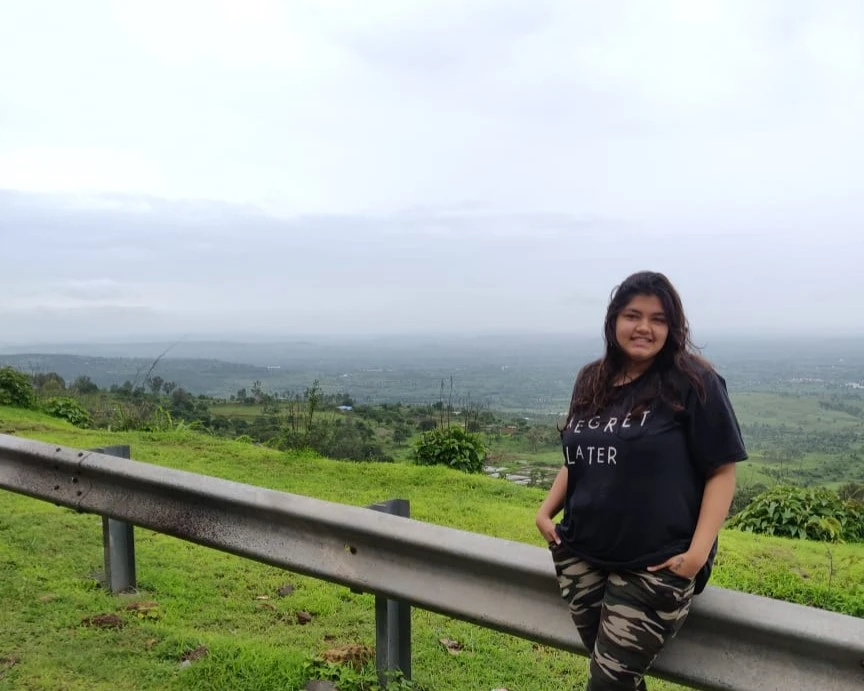
The next morning, I woke up and took a Savaari from Mollem, Goa to Agumbe in Karnataka, a journey filled with stunning pitstops that showcased the beauty of the region. Agumbe, known as the “Cherrapunji of South India,” receives over 7,000 mm of rainfall annually, making it one of the best places to experience the monsoon in its full glory. It is one of the best monsoon trips in Karnataka. But before reaching this lush paradise, I explored several gorgeous destinations along the way.
Gokarna
My first stop was Gokarna, a small coastal town known for its pristine beaches and spiritual vibe. Unlike the bustling beaches of Goa, Gokarna offers a tranquil retreat with its serene shores like Om Beach and Kudle Beach. I enjoyed a leisurely walk along the coastline, taking in the stunning views of the Arabian Sea. The town also hosts the revered Mahabaleshwara Temple, which draws pilgrims from all over the country.
Honnavar
Next, I visited Honnavar, a charming town nestled along the coastline. Honnavar is known for its beautiful estuaries and backwaters. I took a relaxing boat ride on the Sharavati River, witnessing the breathtaking confluence of river and sea. The lush mangroves and diverse birdlife added to the picturesque setting, making it a perfect spot for nature lovers. If you have some time, be sure to visit the village of Gunavante, known as the Yakshagana village of India. Here, you can experience the mesmerizing art of Yakshagana—a vibrant fusion of music, dance, dialogue, and ornate costumes—passed down through generations in the local families.
Murdeshwar
Continuing my journey, I stopped at Murdeshwar, home to one of the tallest statues of Lord Shiva in the world. The towering statue stands majestically against the backdrop of the Arabian Sea, offering a mesmerizing view. The Murdeshwar Temple, located on a small hill, provided a spiritual experience and panoramic views of the surrounding area. The pristine beach nearby was an ideal place to relax and soak in the beauty.
Sharavati Wildlife Sanctuary
Before reaching Agumbe, I explored the Sharavati Wildlife Sanctuary, a haven for biodiversity. The sanctuary is home to a variety of wildlife, including tigers, leopards, and elephants, as well as numerous bird species. I embarked on a nature trek through the dense forests, immersing myself in the sounds and sights of the wilderness. The serene atmosphere and rich biodiversity made it a memorable experience.
Arriving in Agumbe
Finally, I arrived in Agumbe, a vast yet rapidly dwindling biosphere characterized by dense forests, tropical hills, gushing streams, and torrential waterfalls. This region, home to rare and endangered species of flora and fauna, forms a complete ecosystem on its own. Because of its rich natural resources, Agumbe is part of the UNESCO World Heritage Site, offering a unique opportunity to explore an unspoiled environment. The lush landscape, vibrant wildlife, and refreshing monsoon rains created an enchanting atmosphere, making Agumbe a perfect destination to experience nature at its finest. I checked out this comprehensive Agumbe travel guide to make the most out of my monsoon trip in India.
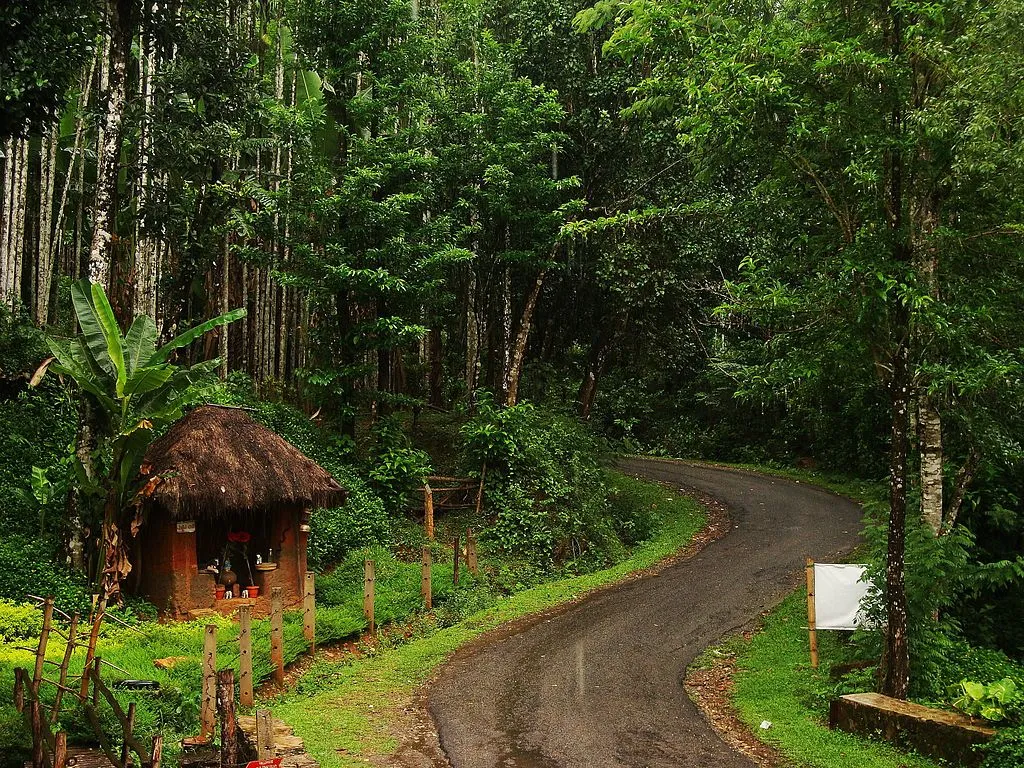
Things to do in Agumbe
Waterfall Hopping
Agumbe is famous for its waterfalls, and besides the popular Agumbe Waterfalls, there are several other scenic falls nearby that you shouldn’t miss. Within 50 km of Agumbe, you can visit Kudlu Theertha, Jomlu Theertha, and Kunchikal Falls. Each of these waterfalls offers a unique experience of India in monsoon, with their cascading waters set amidst verdant surroundings.
Drive Through Agumbe Ghat Road
Driving through the Agumbe Ghat Road is an exhilarating experience. Known for its winding routes and hairpin bends, the road spirals to the highest point, offering stunning views at every turn. On one side, you can enjoy the majestic hills of the Western Ghats, while on the other, the Arabian Sea stretches into the horizon. This scenic drive is ideal for photo ops or stopping over at camping grounds to immerse yourself in the natural environment.
Trekking
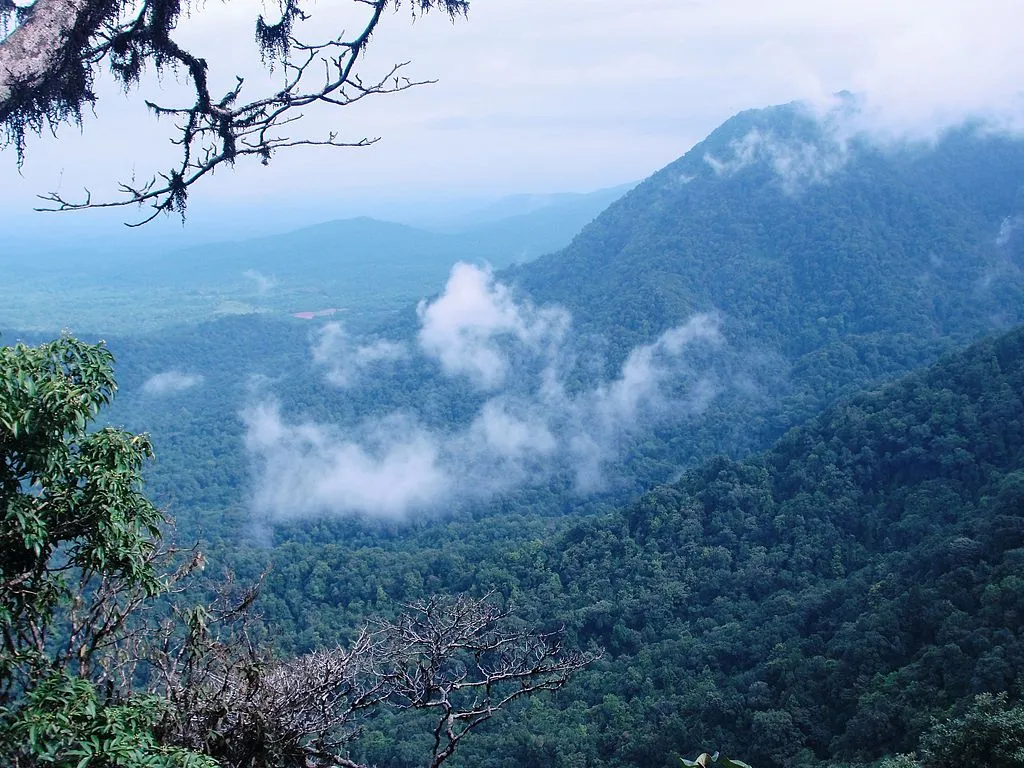
For adventure enthusiasts, Kundadri Hills near Agumbe is a popular trekking destination. The trek base is situated about 12 km from Thirthahalli, which is 32 km from Agumbe. The trek route spans 14 km both ways and takes about 12-14 hours to complete. As you trek, you’ll pass by ancient Jain temples, lush tropical forests of the Western Ghats, and enjoy breathtaking views of sunsets, making it a memorable journey for trekkers and hikers.
Homestay from Malgudi Days
One of the most charming aspects of Agumbe is its homestays. I stayed at the house from Malgudi Days, the most popular homestay in the area. Staying in a homestay allows you to immerse yourself in the local culture and lifestyle, enjoy home-cooked food, and interact with hosts and residents. It provides a unique opportunity to experience the warmth and hospitality of the local community while exploring the serene beauty of Agumbe.
Agumbe to Coorg (via Moodbidri)
Total Distance: 185 km
Total Driving Time: 5 hr 30 min
Suggestion: Overnight stay in Coorg
I left Agumbe early in the morning, starting my day with a delicious breakfast of Cheppi Surnali (Savory Buttermilk Dosa) and Godi Surnali (Sweet Buttermilk Dosa). Pratik Bhaiya recommended I take along some spicy arbi (arvi) chips, which turned out to be a delicious snack for the journey. As we continued, we decided to make a unique pitstop at Moodbidri, about an hour and a half away.
Moodbidri
Moodbidri, also known as Jainkashi, is an ancient temple town located 35 km from Mangalore. Renowned as a center for Jainism, Moodbidri is home to several Jain temples and holds significant historical and cultural importance. During my visit to this peaceful, spiritual town, I explored a few key attractions:
- Saavira Kambada Basadi (1000 Pillar Jain Temple): This magnificent temple, built in the 15th century, is famous for its thousand intricately carved pillars, each unique in design. The temple’s architectural beauty and serene ambiance make it a must-visit for anyone traveling to Moodbidri.
- Gundyadka Falls: A short drive from the town, Gundyadka Falls offers a serene escape into nature. The waterfall, surrounded by lush greenery, is a perfect spot to relax and enjoy the natural beauty of the region.
- Soans Farm: Situated on National Highway 13, Soans Farm is a 100-acre farmland known for its innovative agricultural practices. The farm is a sanctuary for exotic fruit and flower-bearing trees, offering a delightful experience for visitors. You can explore a variety of crops, including pineapple, mango, sapota, pepper, cinnamon, nutmeg, cocoa, cashew nut, coconut, and vanilla, showcasing the year-round utilization of land.
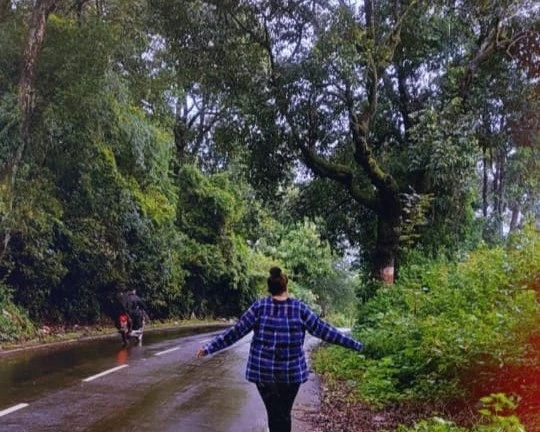
Arriving in Coorg
After exploring Moodbidri, I continued my journey to Coorg, also known as Kodagu, a picturesque hill station renowned for its lush landscapes and coffee plantations. Road-tripping to Coorg in monsoon was a mesmerizing experience. The winding roads were lined with mist-laden hills and vibrant greenery, and the cool, refreshing air added to the charm of India in monsoon. Waterfalls gushed down the hillsides, creating a spectacular display of nature’s beauty, while the sweet aroma of wet earth and coffee filled the air.
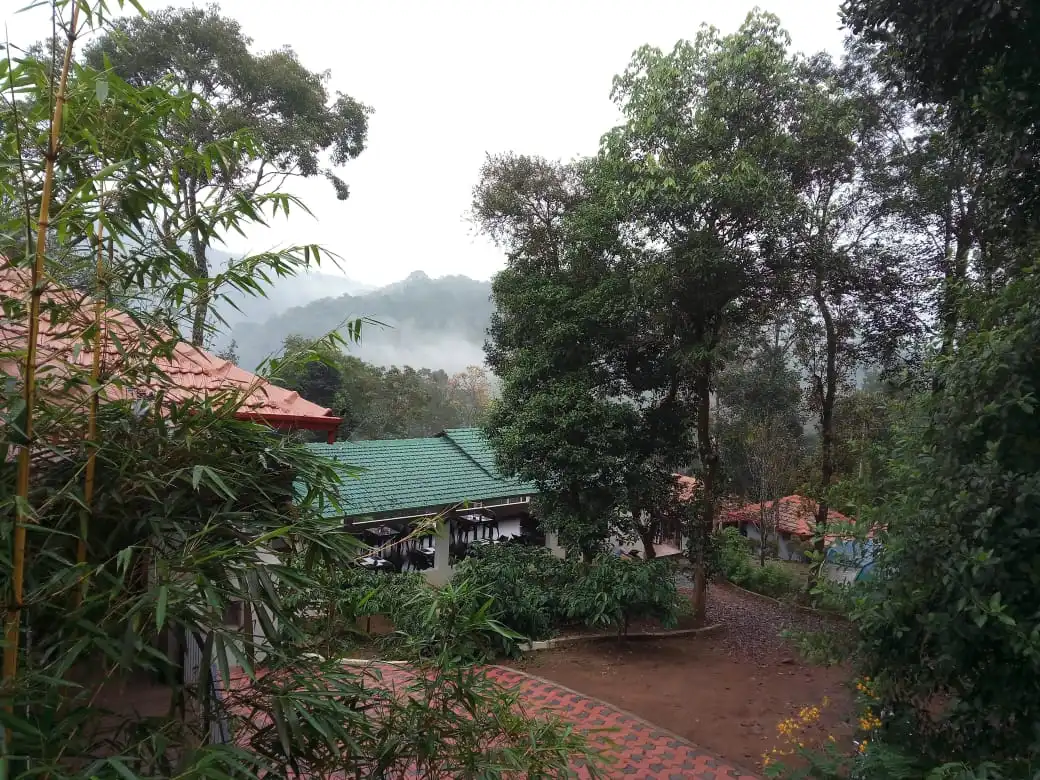
Things to do in Coorg in monsoon
- Explore Coffee Plantations: Coorg is famous for its sprawling coffee estates. I took a guided tour of one, learning about the coffee-making process from bean to cup and enjoying a freshly brewed cup of coffee amidst the serene plantation.
- Visit Abbey Falls: Nestled amidst lush greenery, Abbey Falls is a must-visit spot. The cascading waterfall, especially during the monsoon, is a breathtaking sight, and the surrounding trails offer a perfect opportunity for a scenic walk.
- Trek to Raja’s Seat: This vantage point offers panoramic views of the surrounding hills and valleys. It’s an ideal spot to witness stunning sunsets and soak in the natural beauty of Coorg.
- Explore Bylakuppe: Home to one of the largest Tibetan settlements in India, Bylakuppe is a short drive from Coorg. The Golden Temple, a Tibetan monastery, is a highlight, with its stunning architecture, vibrant murals, and peaceful atmosphere providing a unique cultural experience.
I rested in Silver Brook Estate, surrounded by lush coffee plantations. The air seemed even more aromatic during the monsoon, and I fell in love with the soothing scent of the coffee. For dinner, I headed to East End Hotel in Virajpet and enjoyed their legendary Kadambuttu, Paputtu with Bamboo Shoot Fry and Baimbale Curry. After a day of exploration, I got some well-deserved rest.
Coorg to Ooty (via Bandipur and Mudumalai Tiger Reserve)
Total Distance: 235 km
Total Driving Time: 6 hr
Suggestion: Overnight stay in Ooty
The next morning, my host suggested trying civet coffee in Coorg, which seemed like a strange suggestion at first, considering it’s made from civet cat droppings. But curiosity got the better of me, and I decided to give it a shot. I visited Big Cup Cafe and had a cup of civet coffee, and to my surprise, it was absolutely delicious. Energized and ready for the day, I set off on my way to Ooty, traveling via Bandipur.
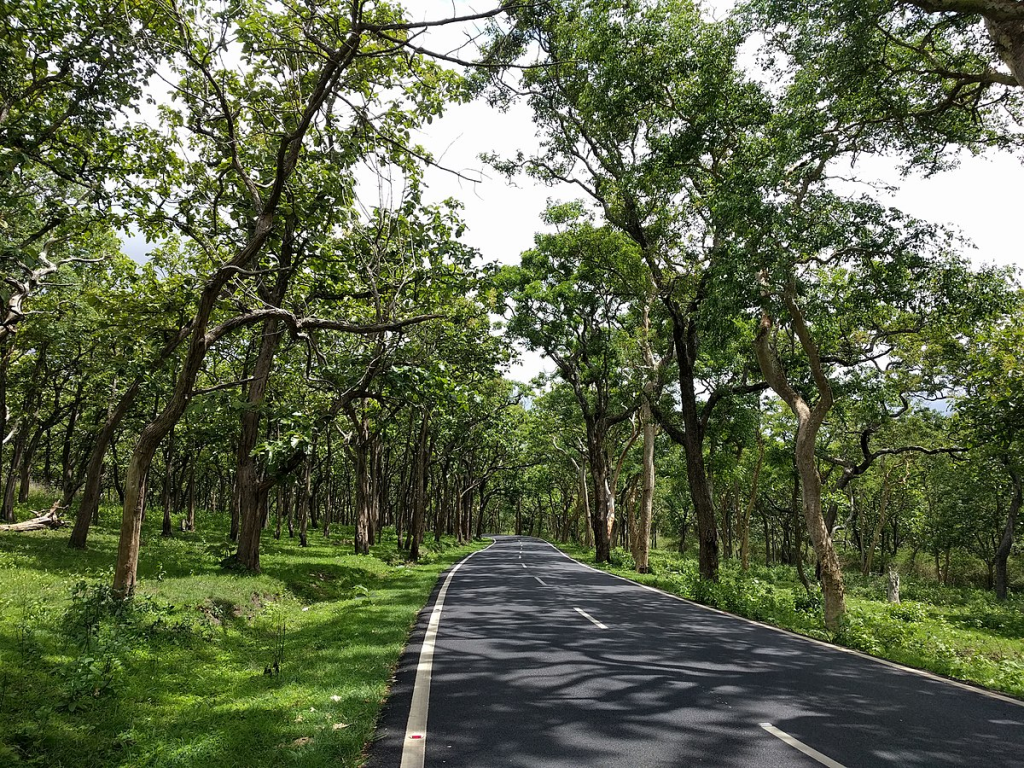
Along the way, I stopped at the Mudumalai Tiger Reserve. This monsoon trip in India is perfect for wildlife lovers, offering glimpses of diverse fauna along the way. I visited Theppakadu Elephant Camp at the reserve, one of the best elephant camps in India, where the Oscar-winning short documentary “The Elephant Whisperers” was shot. It was an amazing experience to witness the majestic elephants and learn about their conservation efforts.
In order to protect wildlife, connecting roads are narrow and transport is highly regulated. You can visit any of these national parks and go on a jeep safari to see leopards, black panthers, tigers, spotted deer, sambar, elephants, peafowls, and many more exotic wild creatures. Finally, I reached Ooty, and the town was simply gorgeous during the monsoon. Here are the things I did in Ooty:
Things to Do in Ooty
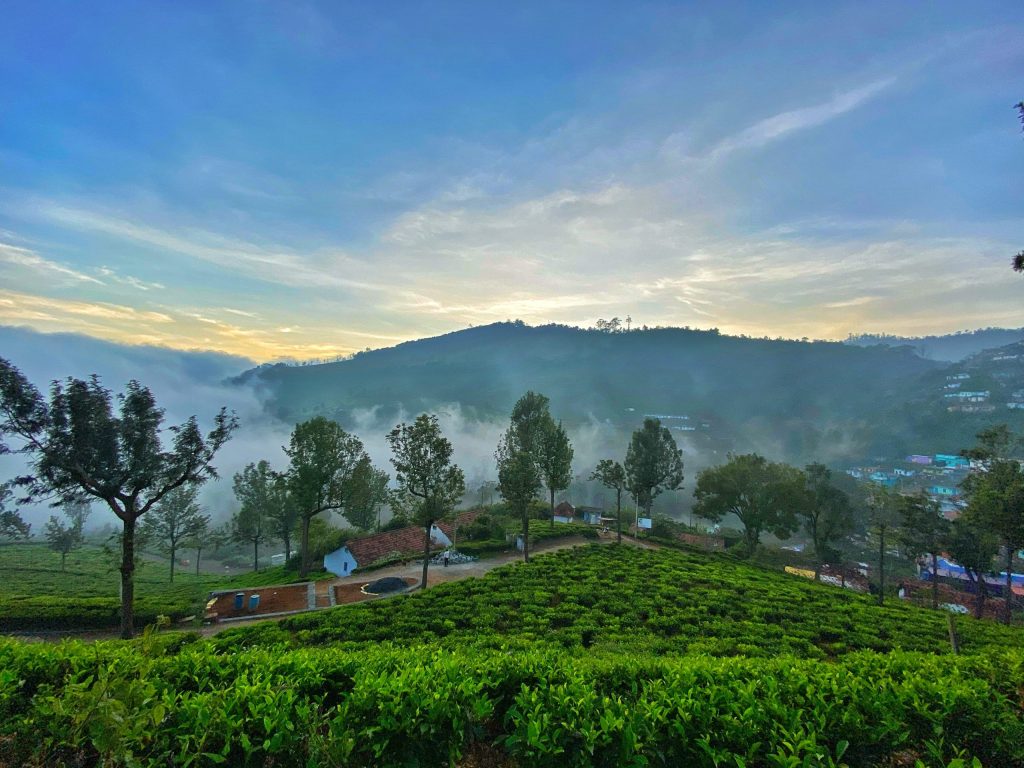
- Explore the Botanical Gardens: The Government Botanical Gardens in Ooty are a must-visit, especially during the monsoon when the gardens are lush and vibrant. I strolled through the beautifully manicured lawns and marveled at the diverse plant species.
- Visit Ooty Lake: Ooty Lake is a popular spot for boating, and the misty weather added to the serene atmosphere. I took a peaceful boat ride and enjoyed the scenic views of the surrounding hills.
- Take a Ride on the Nilgiri Mountain Railway: Known as the Toy Train, this UNESCO World Heritage Site offers a charming journey through the Nilgiri Hills, with breathtaking views of the landscape. The train ride was a delightful way to experience the beauty of Ooty.
- Hike to Doddabetta Peak: The highest point in the Nilgiri Mountains, Doddabetta Peak offers panoramic views of the surrounding area. The trek to the peak was invigorating, and the views from the top were absolutely stunning.
- Visit the Tea Museum and Factory: Ooty is famous for its tea plantations, and a visit to the Tea Museum provided insights into the tea-making process. I sampled different varieties of tea in India and even picked up some fresh tea leaves as souvenirs.
Pro Tip for Exploring Ooty During Monsoon
Monsoon is a great time to visit Ooty if you prefer a quieter and more peaceful experience, as the crowds are comparatively thin during this season. As a result, the rates for cottages and hotels in Ooty are often reduced, making it an excellent opportunity to enjoy luxury accommodations at a lower cost. Additionally, the tickets and entry fees for popular attractions like the Botanical Gardens are also lowered, offering even more value.
I settled into my accommodation at The Bowers Chalet, a gorgeous retreat with a garden and stunning views. The chalet overlooks the Western Ghats and is surrounded by lush greenery, providing a serene and picturesque setting. Staying at The Bowers Chalet was a delightful experience, as it offered a perfect blend of comfort and natural beauty, making my monsoon trip in India to Ooty truly memorable.
Ooty to Kodaikanal (via Coonoor and Coimbatore)
Total Distance: 250 km
Total Driving Time: 7 hr
Suggestion: Overnight stay in Kodaikanal
The next morning, I set off from Ooty towards Kodaikanal, eager to explore the beauty of this hill station. My route took me through the charming towns of Coonoor and Coimbatore, each offering its unique attractions.
Exploring the beauty of Coonoor
Coonoor is one of those hill stations you pass through on the way to Kodaikanal. I made sure to stop at Sim’s Park, a botanical marvel filled with rare plant species. Walking along the pathways, surrounded by colorful blooms and ornamental shrubs, was a truly breathtaking experience.
I also explored Sivagnanam Road, a vibrant street perfect for textile enthusiasts. The shops offered a treasure trove of handloom sarees, cotton fabrics, and traditional textiles, making it a delightful shopping experience.
A stop in Coimbatore
In Coimbatore, I was awestruck by the Adiyogi Shiva Statue, a massive 112-foot-tall sculpture of Lord Shiva. This architectural masterpiece symbolizes inner peace and is recognized by the Guinness Book of World Records as the world’s largest bust sculpture. The serene surroundings made it a perfect place for reflection.
For car enthusiasts, the GD Naidu Museum is a must-visit, similar to the Payana vintage car museum in Mysore. The museum showcases an impressive collection of automobiles from around the world, all maintained in pristine condition. It was fascinating to see the range of cars, motorcycles, and other vehicles on display.
I also visited the Dhyanalinga Yogic Temple for a spiritual retreat. The peaceful ambiance of the temple provided a calming space for meditation and inner exploration.
Arriving in Kodaikanal
Finally, I arrived in Kodaikanal, often called the ‘Princess of Hill Stations.’ Resting at an elevation of 2000 meters above sea level, this hill station is surrounded by lush green forests and is renowned for its scenic beauty.
The views in Kodaikanal during the monsoon are absolutely breathtaking. The landscape is enveloped in lush greenery, towering hills, and mystical forests. I was captivated by the deep valleys, cloudy skies, and rainbows that appeared after the rain.
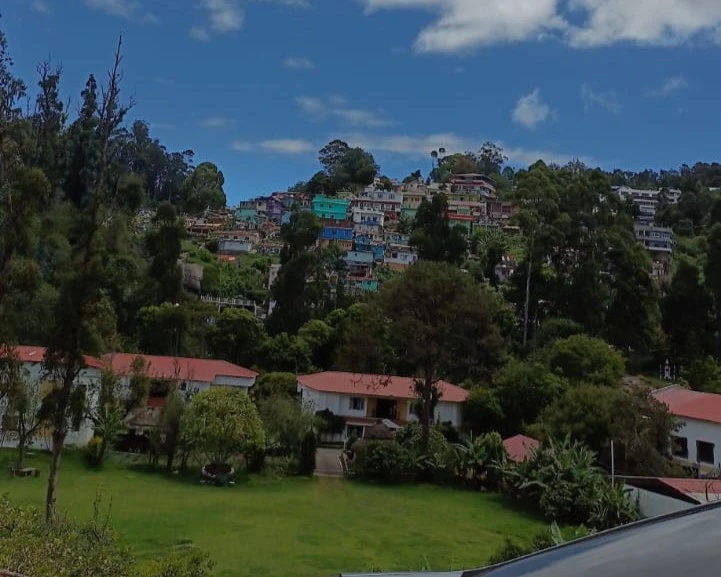
I visited several scenic points in Kodaikanal, including Green Valley View (also known as Suicide Point), Pillar Rocks, Berijam Lake, Dolphin’s Nose, Coakers Walk, and Bryant Park. Each spot offered stunning views and a chance to sit back and enjoy the tranquility of nature.
Lakes and Waterfalls
Kodaikanal is home to lovely blue-water lakes, but what baffled me the most was when Pratik Bhaiya told me that the Kodaikanal Lake is man-made. Yes, you heard that right! It was built in 1863 by Sir Vere Henry Levinge, a collector of Madurai, making the lake more than 150 years old. Sir Levinge had a vision of promoting the area as a tourist spot, so he constructed the lake at his own expense. He transformed the marshy land by building a strong bund across three streams, creating a four-point star-shaped reservoir to enhance the lake’s beauty. The lake was also stocked with fish to add to its charm.
Sir Levinge brought in the first boat from Tuticorin, a city on the Coromandel Coast off the Bay of Bengal, which was known for manufacturing fine boats at the time—very different from the usual ones seen today. I took a boat ride to explore the beauty of the lake, surrounded by the lush Palani Hills, and it was truly a mesmerizing experience.
I also visited the picturesque Berijam Lake, a freshwater reservoir hidden amidst dense green forests. The serene atmosphere made it a perfect spot for reflection. The monsoon season brought Kodaikanal’s waterfalls to life. Bear Shola Falls, Glen Falls, Fairy Falls, and Silver Cascade were all stunning, with their waters cascading through boulders and greenery. The story of Bear Shola Falls intrigued me, as it’s said that bears once drank from its waters.
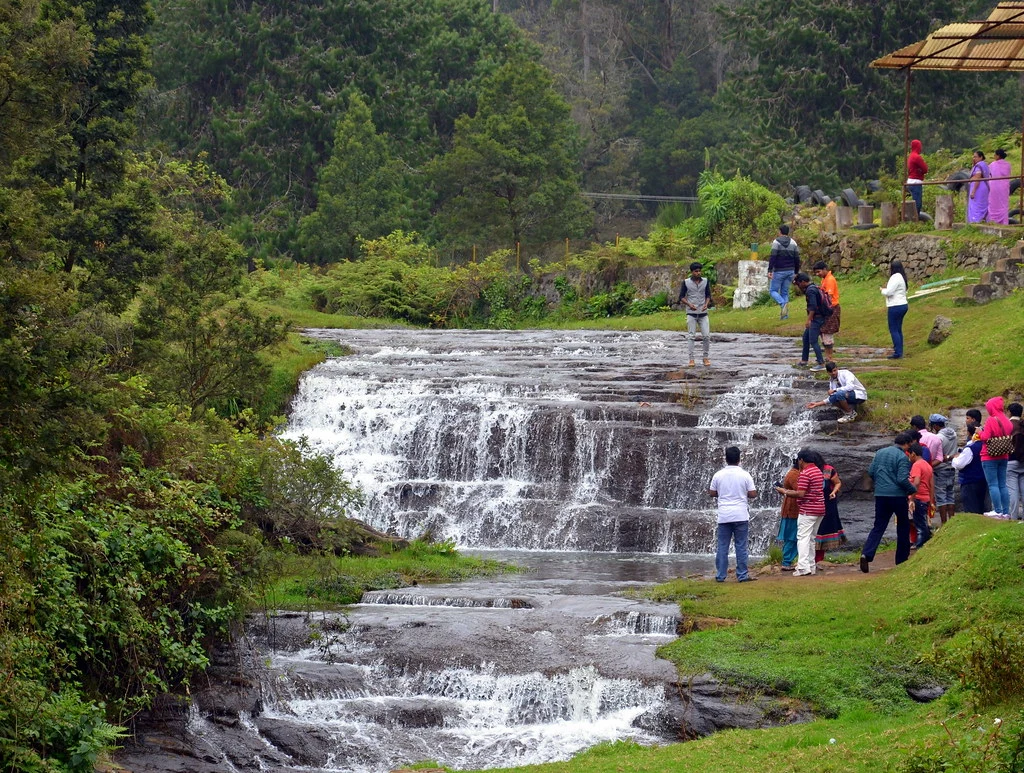
Culinary Delights
Monsoons are the best time to indulge in the culinary delights of Kodaikanal. I enjoyed authentic South Indian food, including a variety of dosas and idlis, at some of the local restaurants. Tava Vegetarian Restaurant, Astro Veg, Muncheez, and Cloud Street were some of the places I tried, each offering delicious meals that complemented my exploration of this beautiful hill station.
I had Kuzhi Paniyaram, one of the most famous monsoon foods in Tamil Nadu, along with vada curry and mushroom biryani. These dishes were flavorful and comforting, perfect for the cool monsoon weather.
I stayed at Aaric Home Stay, which provided a cozy and welcoming atmosphere, perfect for resting and preparing for another day of exploration in Munnar. I highly recommend visiting Kodaikanal during the monsoon season to fully experience its beauty and culinary treasures.
Kodaikanal to Munnar via Amaravathi Crocodile Farm
Total Distance: 160 km
Total Driving Time: 5 hr
Suggestion: Overnight stay in Munnar
“Save the best for last,” they say, and there is no better way to end my monsoon trip in India than with a scenic drive along the rolling hills of Munnar. On my way, I stopped by the Amaravathi Crocodile Farm, which is considered the biggest crocodile breeding center in southern India. I’ve always had a fear of crocodiles, but visiting this place made me look at them from a different perspective as it highlighted their conservation efforts.
The mugger crocodiles, once abundant in the Amaravathy, Periyar, and Chinnar rivers, have been threatened with near extinction. The captive breeding project at Amaravathy aims to collect crocodile eggs from wild nests, hatch and rear them in captivity, and then release the young crocodiles back into the wild to restore their population. Many crocodiles of all sizes can be seen basking in the sun or piled on one another. The farm currently maintains 98 crocodiles (25 males and 73 females) in captivity, with many adults having been reintroduced into the wild. After this enlightening stop, I continued my journey to Munnar, pausing along the way to enjoy some delicious Puttu and Kadala Curry.
Arriving in Munnar
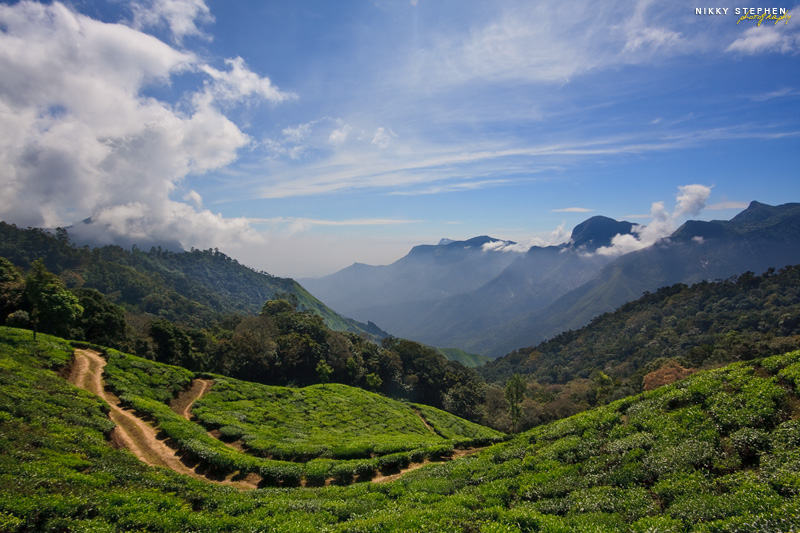
Can I just say once and for all that Munnar is the most beautiful hill station in South India? It is one of the best places to visit in Kerala! Wherever you look, you are greeted by lush greenery, whether it’s dense forests or expansive tea gardens. Also, monsoon is one of the best times to visit Kerala. I recommend staying in Munnar for at least one full day to truly experience the beauty of nature. You can walk into any of the tea gardens, visit the Mattupetty Dam, and even go kayaking to watch the elephants at Anayirankal Park.
Things to do in Munnar
- Explore the Tea Gardens: Munnar is renowned for its vast tea plantations. I took a leisurely walk through the gardens, learning about tea cultivation and sampling freshly brewed tea amidst the scenic backdrop.
- Visit the Tea Museum: The Tea Museum offers fascinating insights into the history of tea in Munnar. I explored exhibits showcasing old machinery, photographs, and the tea-making process.
- Mattupetty Dam: Located about 13 km from Munnar, Mattupetty Dam is a popular spot for picnics and boating. The serene lake surrounded by lush hills provides a perfect setting for relaxation.
- Anayirankal Park: This beautiful park offers a chance to see elephants in their natural habitat. I went kayaking on the reservoir and enjoyed watching the elephants graze along the banks.
- Eravikulam National Park: Home to the endangered Nilgiri Tahr, this national park is a must-visit for wildlife enthusiasts. I took a guided trek through the park and was mesmerized by the stunning views of the Western Ghats.
- Top Station: For breathtaking views of the Western Ghats, I visited Top Station, the highest point in Munnar. The panoramic vistas of the valleys and mountains were truly awe-inspiring.
- Attukal Waterfalls: I also visited the Attukal Waterfalls, a beautiful cascade surrounded by lush greenery. The trek to the falls was invigorating, and the views were well worth the effort.
Discovering the offbeat Munnar in monsoon with Savaari
One of the best parts of my monsoon trip in India to Munnar was discovering hidden gems, thanks to Pratik Bhaiya, who seemed to know all the secret spots. I spent 2 nights in Munnar and was excited to explore these lesser-known wonders that made my visit truly memorable.
Hidden waterfalls
While most tourists head straight to the famous Attukad Waterfalls, I discovered that Munnar has several lesser-known waterfalls that are just as stunning. One hidden gem I visited was Keezharkuthu Waterfalls, also known as Rainbow Waterfalls, tucked away in a secluded area offering peaceful beauty. I also explored Lakkam Waterfalls and Thoovanam Waterfalls, which were equally breathtaking. For those like me seeking an adrenaline rush, these waterfalls offer options for rock climbing and rappelling under the guidance of experienced instructors.
Exploring offbeat tea estates
Munnar is famous for its expansive tea estates with panoramic valley views. I visited Lockhart Tea Estate, where I enjoyed a guided tour and learned about the intricate stages of tea production. The estate even had a small museum showcasing the history of tea cultivation in Munnar, which was fascinating. In addition to Lockhart, I found Kolukkumalai Tea Estate and Poabs Tea Estate to be great options for exploring lesser-known tea plantations that offer a more authentic experience.
Visiting Hidden Temples
Munnar is home to several ancient temples that aren’t well-known to first-time visitors. I was fortunate to visit the Thoovanam Waterfall Temple, nestled in the midst of lush forests. This temple, believed to be over 2,000 years old, is dedicated to Lord Shiva and holds significant importance for the local community. I also explored the Muniyara Dolmens and Karumalloor Shiva Temple, located in remote and scenic spots, offering a unique glimpse into the region’s rich cultural heritage.
Savoring the local cuisine
The local cuisine in Munnar was another highlight of my monsoon trip in India. Ari Pathri and peas curry is among the most famous dishes to try. The rice flour-based pathri has a soft, plain, and silky texture, perfectly complemented by the finely chopped spicy chicken curry. This delicious dish was a treat for the taste buds, and I couldn’t get enough of it. I headed to Rochas Restaurant to experience the exquisite combination of the pathri’s delicate flavor with the curry.
Discovering these hidden gems and savoring the local cuisine added an enriching layer to my journey, allowing me to experience the beauty and culture of Munnar beyond the typical tourist attractions.
Other monsoon road trips in India suggested by Savaari
Embarking on a monsoon trip in India offers a unique opportunity to witness the country’s landscapes transform into lush, vibrant vistas. Whether you’re seeking adventure, tranquillity, or cultural exploration, these road trips curated by Savaari promise an enriching experience. Dive into the magic of the monsoon with these handpicked road trip itineraries that showcase the best of India’s natural beauty.
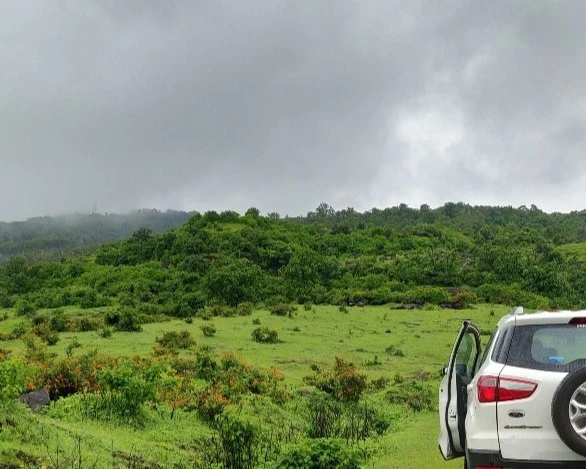
Waterfall wonders – The Charmadi Ghat monsoon drive
- Route: Bangalore – Hassan – Mudigere – Charmadi – Balehole – Sringeri – Agumbe – Tirthahalli – Chikmagalur – Hassan – Bangalore
- Distance: 500 km
- Road Conditions: Excellent
- Tips: This is a quintessential monsoon trip in India, where you can savor the charms of Charmadi Ghat with its numerous waterfalls. Book a Savaari cab from Bangalore and drive on winding mountain roads with waterfalls every few kilometers. Visit the famous Shankaracharya Math and Sharada Devi Temple in Sringeri. Enjoy lovely valley views from the sunset point in Agumbe and be mesmerized by the green landscape in the valley from Kundadri Hill.
- Recommended Night Halt: Tirthahalli
Aromatic adventures – The Malnad coffee trail
- Route: Hassan – Sakleshpur – Madikeri – Sullia – Subramanya – Hassan
- Distance: 331 km
- Road Conditions: Very Good, with some broken patches
- Travel Tips: Take this monsoon trip in India to drive through the beautiful landscape of meadows and rolling hills. Experience the rolling meadows of Sakleshpur and visit Manjarabad Fort built by Tipu Sultan. Enjoy the glorious sight of Mallalli Falls, drive amidst rolling hills and cascades in Coorg, and visit the famous temple town of Subramanya.
- Recommended Night Halt: Madikeri
From temples to waterfalls – The Uttara Kannada drive
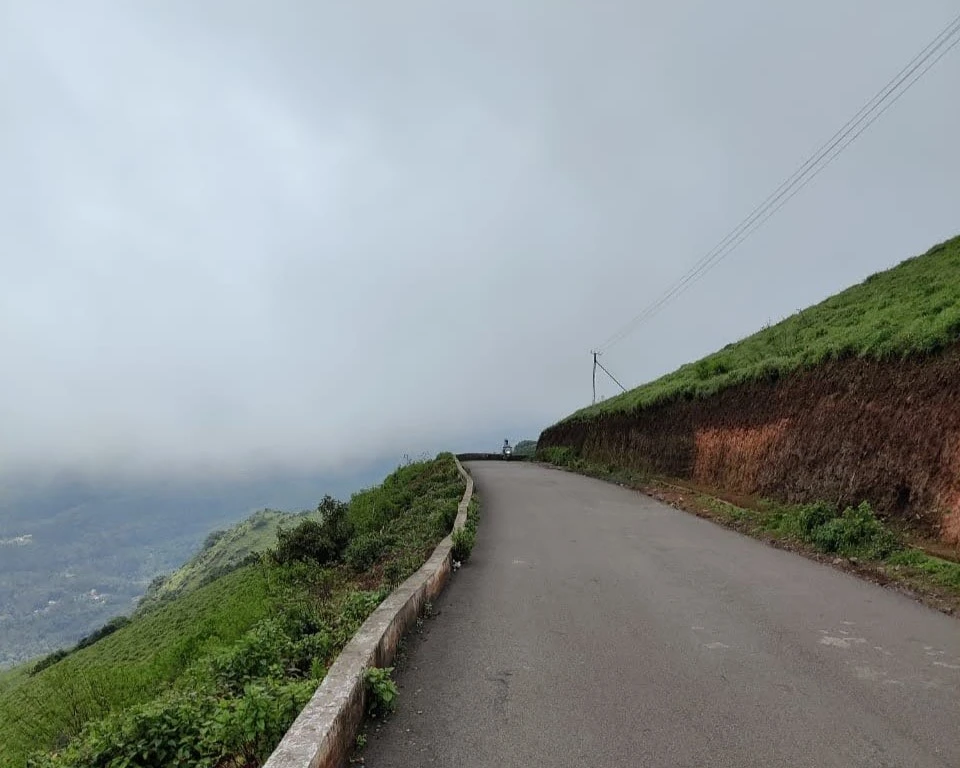
- Route: Hubli – Sirsi – Gokarna – Karwar – Dandeli – Hubli
- Distance: 427 km
- Road Conditions: Very Good
- Travel Tips: This road trip captures the beauty of India in monsoon. Explore pristine forests of Uttara Kannada and experience numerous cascades. Discover waterfalls around Sirsi and visit the lovely temple at Banavasi. Visit one of the nine Jyotirlingas and the beautiful beaches at Gokarna. Experience river rafting and bird watching, including Hornbills, in Dandeli.
- Recommended Night Halt: Gokarna
Enchanting Kerala – A drive through lush landscapes
- Route: Kumily – Gavi Reservoir – Sabarigiri Hydro Project – Angamoozhy – Elappara – Vagamon – Arakulam – Idukki – Kattappana – Kumily
- Distance: 287 km
- Travel Tips: Embark on this monsoon trip in India to drive through some of the best-preserved forests in the country. Go for a quick safari in Gavi Forest, enjoy the meadows of Vagamon, take in the views from Calvery Mount in Kattappana, and be awestruck by the sight of Idukki Dam.
- Recommended Night Halt: Vagamon
Waterfall wonders – Exploring the cascade circuit
- Route: Belgaum – Amboli – Sawantwadi – Chorla Ghat – Belgaum
- Distance: 230 km
- Road Conditions: Very Good
- Travel Tips: Book a Savaari in Belgaum and enjoy the pristine and beautiful nature of this circuit during your monsoon trip in India, with opportunities to savour Malvan cuisine in Sawantwadi. Sawantwadi is one of the best places to visit in July in India, as it captures the unaltered beauty of India in monsoon.
- Recommended Night Halt: Sawantwadi
Sahyadri splendor – A monsoon day trip
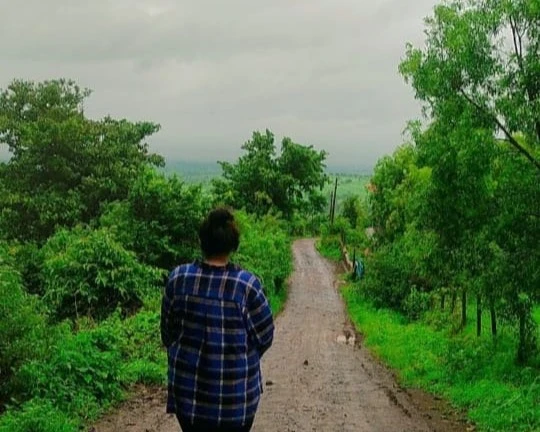
- Route: Pune – Tamhini Ghat – Kolad – Pali – Khopoli – Pune
- Distance: 260 km
- Travel Tips: This is a day trip offering sheer bliss while driving in the monsoon. The landscape is stunning, with myriad waterfalls greeting you along the way. It’s a perfect monsoon trip near Pune.
Exploring the Western Ghats – A road trip of a lifetime
I absolutely loved this monsoon trip in India and highly recommend visiting these locations. I took my time, spreading the journey over seven days, as I wanted to explore each attraction thoroughly. However, you can always adjust the itinerary to make it shorter or longer, depending on how much you want to see.
Pratik Bhaiya was like an encyclopedia—he helped with my luggage, was always punctual, took me to the best places to eat, and knew the most comfortable pit stops and rest stops. I did this monsoon trip in India solo, but I plan to bring my friends and family next time and add Valparai in Tamil Nadu to my itinerary. I think I’ll take even more time to explore because this was the dreamiest road trip I’ve ever been on, and the Western Ghats made me fall in love with India all over again. This monsoon trip in India was a delightful combination of verdant valleys, gorgeous waterfalls, and temples that added a spiritual element. I highly recommend downloading the Savaari app and experiencing this road trip at least once in your lifetime.
Useful links:
- Monsoon information – India Meteorological Department, Ministry of Earth Sciences, Government of India
- Health advisory for monsoon preparedness for prevention and control of vector borne diseases
- Kali Bridge Collapse in Karnataka’s Karwar Amidst Karnataka Floods Leaves One Injured, Traffic Diverted – Flood in India Today
Last Updated on August 12, 2024 by Shabari Shankar



